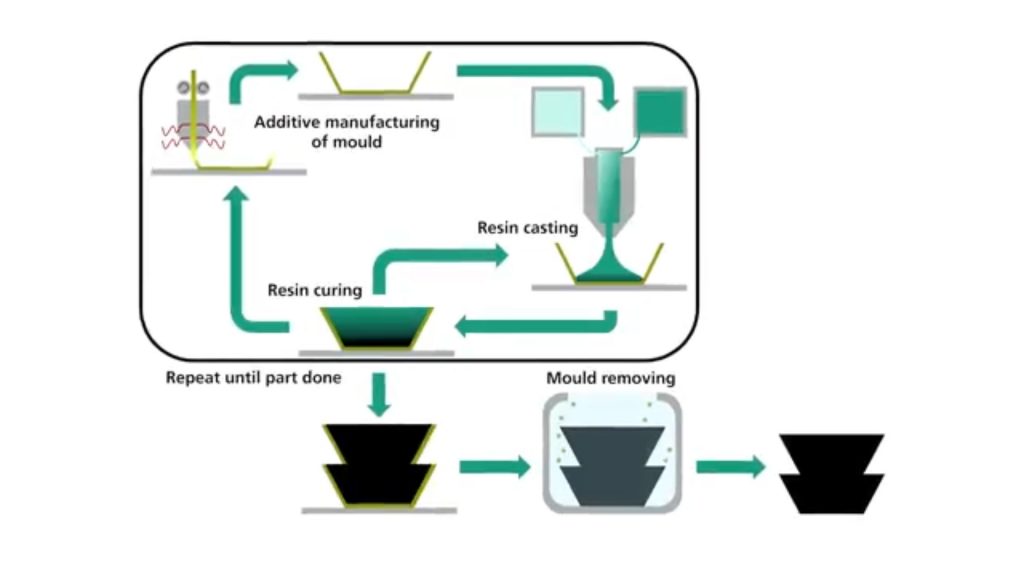Scientists at the Fraunhofer Institute for Manufacturing Engineering and Automation (Fraunhofer IPA) have developed a new hybrid 3D printing method.
Combining the advantages of 3D printing and injection molding, the so-termed Additive Freeform Casting (AFFC) saves time and encourages the use of new material combinations.
Multiple versions in no time
In AFFC, common FFF 3D printing is used to make a soluble PVA mold.
In traditional injection molding, a master mold is typically machined, which can be high cost to the manufacturer, and only affords a single version. With 3D printing, successive versions can be tried in relatively little time, improving the usability of a part.
In the second step of the process, the 3D printed mold is filled with a resin or another polymer, such as PU. Not only does this save time against 3D printing the part with 100% infill, it also improves its mechanical properties eliminating layers.
Jonas Fischer IPA expert and co-developer of the AFFC process explains how, in 3D printing “The material is not ‘full’ in the mold, as in casting. As a result, the mechanical properties of the component are worse.”

Hands-free post processing
Filled with PU, a small 3D Printed PVA mold takes only three minutes to set. Afterwards, the object is soaked in water where the mold simply dissolves.
By relying on poured material, the AFFC method is capable of casting bulk material thermosets with no anisotropy, that are highly resistant to heat.
Fischer explains, “Electrically insulating components such as sockets can be manufactured with it.”
“The process is also suitable for foams and upholstery required for security elements.”
In comparison to 3D printed components, the parts also have better mechanical properties and can be produced faster in greater volumes.
The project is still in its early stages, and Fraunhofer IPA are looking for industry partners to help them develop and potentially commercialize the process in the future.

A leading authority on 3D printing in research
Fraunhofer IPA’s wider network, the Fraunhofer Society of 69 technology research institutes throughout Germany, is a leading authority on the production of new 3D printing technologies.
In 2017, several Fraunhofer branches announced their collaboration on the Future Additive Manufacturing (futureAM) project “to significantly accelerate” and reduce the cost of metal 3D printing.
At the beginning of 2018, the German government awarded the society a €30 million ($37.3 million) grant fund cutting-edge 3D research at Fraunhofer Institute for Additive Production Technology (IAPT) and the Fraunhofer Center for Applied Nanotechnology (CAN).
Scientist from sister institution Fraunhofer ILT have also been nominated as Academic/Research Team of the Year in the 2018 3D Printing Industry Awards for their TwoCure free-floating 3D printing technique.
Help adjudicate the Academic/Research Team of the Year and more in the 2018 3D Printing Industry Awards here.
To stay up to date with Fraunhofer 3D printing research projects and more industry-leading news, subscribe to our newsletter, follow us on Twitter, and like us on Facebook.
Protolabs is sponsoring the 2018 3D Printing Industry Awards design competition. Submit your design now to win a 3D printer.
Looking for a new career move? Search and post on 3D printing jobs.
Featured image shows injection molding quality parts made using Fraunhofer IPA’s hybrid AFFC method. Photo via Fraunhofer IPA



